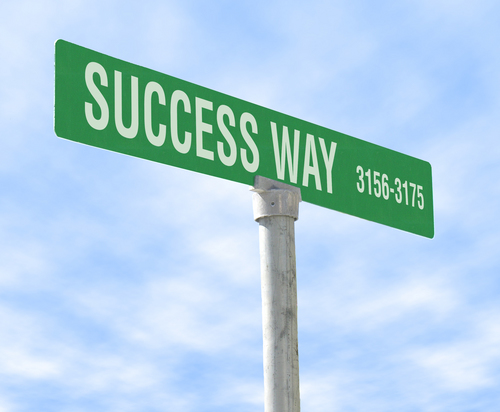With steadily increasing global competition, it is more important than ever that each employee in your organization have a clear understanding of the company’s overall vision, be in alignment with the organizational goals, and have identified how their day to day activities contribute to the accomplishment of these objectives.
No longer do people have the luxury of arriving at work, completing their assigned tasks, and going home, thinking, magically, that everything will continue to work out as before. We are experiencing a rapidly changing business climate, which demands shifts in attitudes and creative thinking in order to meet the challenges of the future.
How can your company accomplish this throughout your organization?
Beginning, as author Steven Covey, reminds us, “with the end in mind.” As an executive, you must ask yourself and your team what the “ideal” looks like in each key area. In sales, for example, what would be the ideal situation? How would it appear? What about manufacturing, administration, and distribution? If everything were operating perfectly, how would you describe it?
Bringing key management together for this type of strategic planing session will result in your having identified a crystal clear vision for the entire organization, with each and every segment of the business functioning at it’s optimal level.
This visioning exercise can then be adapted and used by each department to create a “mini” version for their own area of responsibility and, further, to the individual, enabling she or he to relate their job to the bigger picture as well as their personal goals.
Once you have a clear vision of what the ideal would be in each area of your organization, the next step is to identify several goals by which you can measure your progress. For the sake of this exercise, we’ll use a one year time frame, since this is a reasonable period to institute change, while allowing you to experience success early on.
Looking at each segment of your business, what would have to happen to accomplish your ideal vision? If, for example, in distribution, the ideal was to achieve 100% on time delivery and no more than a 72 hour turnaround, what are the measurable goals that would support it’s accomplishment?
When setting goals, it is important to use the S.M.A.R.T. method , whereby each goals is Specific, Measurable, Actionable, Realistic, and Timed. Specifically, what will you accomplish by when? Then, from your list of goals, you can develop 30–90 day milestones and further reduce those to identify the daily actions that must be taken in order to succeed.
For example, part of the vision for your sales department might be, “To be the best in our industry. To be the ‘gold standard’ by which our competition measures itself against.” This will likely translate to an increase in sales, improved customer retention, better referrals and so on.
From this, the sales woman in your New Jersey territory may, looking at her personal vision and goals, decide she wants to earn 50% more in commissions and calculates that this would require XX dollars in sales each quarter. From this, she has determined, based on past performance, how many sales per month she needs and, further, how many presentations she needs to make each week. This breaks down further into how many calls she needs to make each day in order to accomplish this, what additional systems she might implement to achieve better customer retention, and which networking functions would best support her vision.
With each and every individual, in each and every department, holding the same, clear vision and knowing their role in it’s accomplishment, you will experience a level of success beyond your wildest expectations.
![]() Jim Donovan, is the author of several critically acclaimed self-help and business books, published in 22 countries, a highly sought after motivational speaker, and the President of Jim Donovan Associates, a peak performance consulting company that offers programs and services to help companies grow and prosper in today’s competitive marketplace. To learn more visit JimDonovanAssociates.com.
Jim Donovan, is the author of several critically acclaimed self-help and business books, published in 22 countries, a highly sought after motivational speaker, and the President of Jim Donovan Associates, a peak performance consulting company that offers programs and services to help companies grow and prosper in today’s competitive marketplace. To learn more visit JimDonovanAssociates.com.
Author: Ethan Theo
Abe WalkingBear Sanchez is an International Speaker / Trainer / Consultant on the subject of cash flow / sales enhancement and business knowledge organization and use. Founder and President of www.armg-usa.com, WalkingBear has authored hundreds of business articles, has worked with numerous companies in a wide range of industries since 1982 and has spoken at many venues including the Shakespeare Globe Theater in London.
Building A Gamers Brand

Entrepreneur Daily: Sports fans of all ages have plenty of team memorabilia to help them root on their favorite players. But what about the increasing number of grown-up gamers? How can they show off their gaming pride? Before G8 Brand, there weren’t too many options. But now, this lifestyle brand hopes to change the public’s perception of gamers and their sense of style. “I always wondered why nobody had ever done an apparel brand for gamers,” said Tony Crisp, owner of G8 Brand. “What Quiksilver has given to surfers and what Volcom has given to skaters is what I want G8 Brand to give to gamers … a brand to call their own.”
The first collection of t-shirts consists of high-fashion prints inspired by gaming designs and classic video game imagery. As for the future, the brand plans to launch a special artist series of tees, in addition to a signature series with some of the world’s top pro gamers.
New Brand Targets Gamers [Entrepreneur Daily]
The Way To Success

In this article, I shall describe the most important attributes and activities to ensure success. I define success as being popular, powerful, rich, free and happy. A series of disciplines can show you the path but only you can tread it.
“I can provide the recipes but you must do the cooking.”
We all want to be popular. Every human being longs to be loved. Some deny that they feel this way. They really need help because they are denying a basic requirement of life. There is nothing wrong with seeking popularity but it must be sought in moderation. The desire becomes dangerous when it becomes more important than everything else. Most people go through short phases of desperately needing to be popular. That’s all right as long as the need doesn’t last. A normal wish to be liked by our friends and family is healthy. Indeed, if families devoted more effort to being nice to each other much pain and suffering would be spared.
Think about the people you like. Do they talk about themselves all the time? Of course not. If they did you wouldn’t like them. So to be popular you must think of the other person. Most of us are wrapped up in ourselves a lot of the time. At its worst it is called selfishness and it is a serious problem. If you think it is someone else’s problem, you are probably wrong; it is more likely a problem for you.
Interesting people are nearly always popular. An interesting person is one who asks you a lot of questions about yourself, your life, your work, your play, your ambitions, your fears. They show a genuine interest in your views. They want your opinions. They may themselves have many excellent stories to tell; they may be wise beyond their years. If they are clever they will work their stories and wisdom into the way they generate your interest – through the questions they ask you. Success or failure for them is the response you give. It is rare indeed for someone not to respond when the subject being discussed is the most interesting in the world – the person themselves.
Interesting people are generally popular, but not always. They need to be nice as well. That means dealing decently with people, showing concern and care, helping when a hand is needed. That help must consist of two quite distinct elements.
One is demeanour – how you appear to others. In a nutshell, smile. People who smile genuinely generate warmth and a special, non-threatening intimacy. There’s another aspect to being nice, being polite. The encyclopaedia says that the purpose of politeness is to make all of the parties to an exchange relaxed and comfortable with one another. Think of politeness as giving face to the other person. We do it to those we meet socially and don’t know very well. Do we do it to our loved ones, within the family, to our colleagues at work? We should. The rude person, however loved, is never popular.
The other way to help I call ‘sleeves’ – roll them up and get on with it. Some people are better at one, some at the other. If you can do both you will be truly popular.
Will being popular make you successful? By itself, no, but it is a prerequisite to the other four forms of success. Without it, don’t bother going any further.
 John Bittleston blogs at TerrificMentors.com, a site that provides mentoring for those who wish a change in career or job, wanting to start a business or looking to improve their handling of people (including themselves).
John Bittleston blogs at TerrificMentors.com, a site that provides mentoring for those who wish a change in career or job, wanting to start a business or looking to improve their handling of people (including themselves).
Successful Young Entrepreneurs

Entrepreneur: What do Sir Richard Branson and Michael Dell have in common? Aside from their obvious success and wealth today, they were both recognized by Entrepreneur magazine as “Young Millionaires” in the late ’80s. When we first interviewed Dell, he was 23 years old and fresh out of college. He spoke about the struggles of running a $6 million business while attending school, but said the rewards were more than worth it. And you can bet that today, as the world’s second-largest PC maker, he’d say the exact same thing.
Our past Young Millionaires have plenty in common; for instance, many of their ideas were initially greeted with skepticism. That’s what happened to California Pizza Kitchen founders Larry Flax and Rick Rosenfield, who told us in 1986 that people thought they were crazy for going into the restaurant business. Yet today, CPK is an industry leader with more than 210 locations in 29 states and eight countries.
When we first highlighted the businesses below, they were relatively unknown. But now, they’re household names virtually synonymous with the products they sell. Find out just how far they’ve come.
Young Millionaires Who Made It Bigger [Entrepreneur]
Know Your Consumer Trends

Entrepreneur Daily: They may not be the most affluent demographic, but marketers are flocking to them. They’re college students, and they’re being touted as the next generation of leaders and consumers. Despite being outnumbered by baby boomers, college students carry more influence than their older counterparts. “They have huge impact on what their parents buy, and then they have their own money, more than any other generation before them, and of course they are the consumers of tomorrow,” said Tom Anderson, managing partner of Anderson Analytics, the researchers who conducted the survey.
The brand survey found that Facebook is the social network of choice amongst college co-eds, and social networking is twice as popular with young women as young men. They love all things Apple, including the iPod and iPhone, and Target ranks as one of their favorite places to shop. Other top picks include Taco Bell as their hot fast food spot and Linkin Park as their top band.
College Crowd Ranks Top Brands [Entrepreneur Daily]
